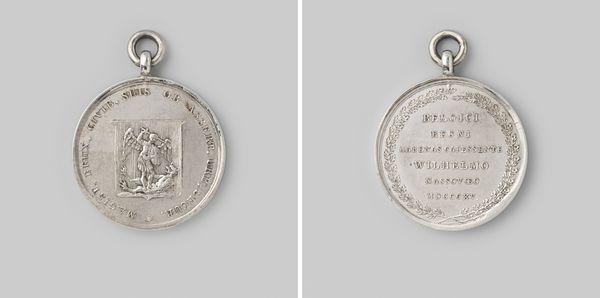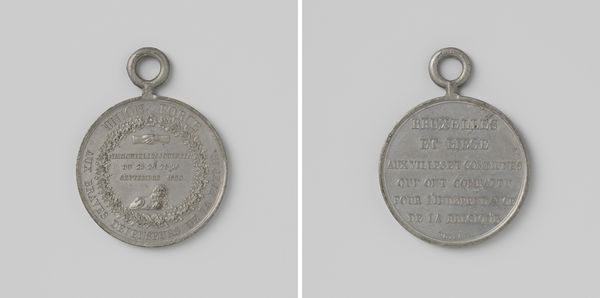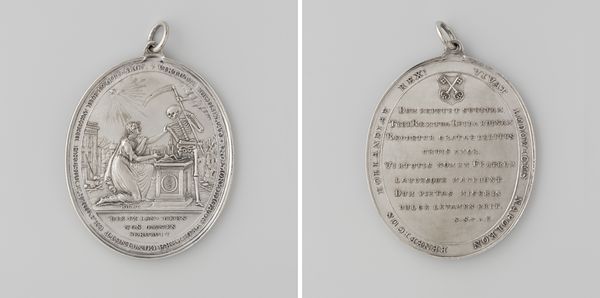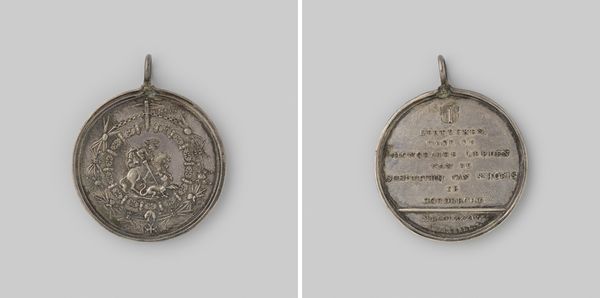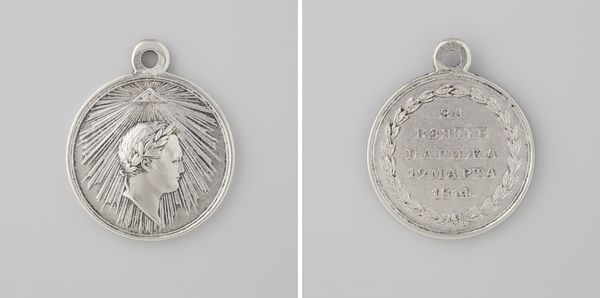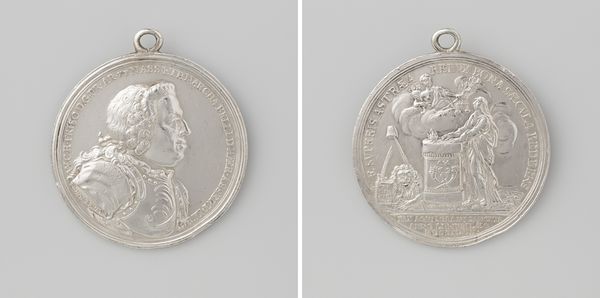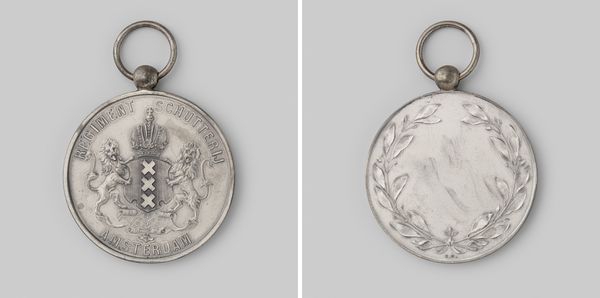
print, metal, engraving
#
neoclacissism
# print
#
metal
#
history-painting
#
engraving
Dimensions: diameter 4.5 cm, diameter 3.6 cm, weight 13.58 gr
Copyright: Rijks Museum: Open Domain
Curator: This is a commemorative medal, "Hanseatische Legion, ter herdenking van de bevrijding van Duitsland," created by Daniel Friedrich Loos in 1814. Editor: The silver is striking. It gives off an almost stark feeling despite the intricate details. I’m curious about the metalwork and its relation to this historical subject. Curator: It’s a direct response to the Napoleonic Wars. Medals like these served as public acknowledgements of service and loyalty. They boosted morale and cemented a particular historical narrative—in this case, the "liberation" of Germany. Editor: Right, so who exactly made this medal, in terms of workshop, the hands involved? Were such medals common during that period? Considering how industrial engravers, for example, had some strong unions which democratized knowledge and production skills to wider crowds… Curator: Daniel Friedrich Loos was a well-known medalist in Berlin, and these medals were government sanctioned, so to speak, for distribution amongst the Legionnaires. Think about the power dynamic inherent in distributing these tokens of appreciation. Editor: Exactly, the act of commissioning and distribution are just as important as its face value or aesthetics, a way of constructing an official record, a specific brand of heroism. The production numbers would say a lot, I think, about social distribution. Curator: Absolutely. These objects were tangible symbols, reinforcing the new political order and, crucially, binding individuals to that order through public recognition. A miniature exercise in state building, would you say? Editor: It seems that in that moment of history, these works tried to unite people towards similar production and social values, through state and market means, although the workers might not have felt it themselves. But as metal, as labor… a nice snapshot of a pivotal moment. Curator: It’s fascinating how objects like this encapsulate political aspirations. Thank you for sharing your perspective, it’s deepened my appreciation for this artifact's role within history. Editor: And you’ve helped me consider this material object not in isolation but embedded in social history; thank you for guiding us towards the big picture!
Comments
No comments
Be the first to comment and join the conversation on the ultimate creative platform.
